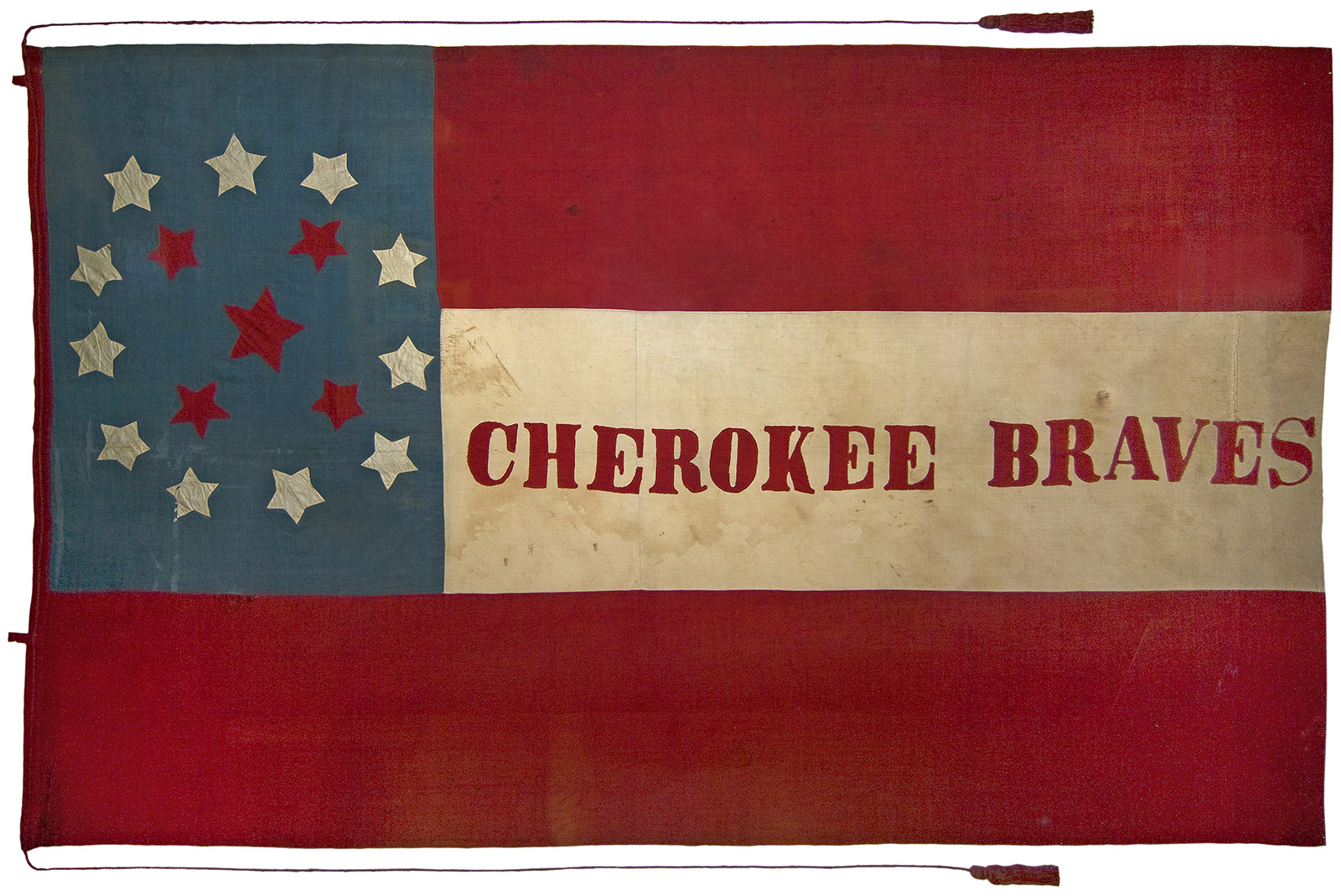Last updated: March 29, 2025
Lesson Plan
Bellringer - Cherokee Braves

National Color of the 1st Cherokee Mounted Rifles.
WICR 30118
- Grade Level:
- Middle School: Sixth Grade through Eighth Grade
- Subject:
- Literacy and Language Arts,Math,Science,Social Studies
- Lesson Duration:
- 30 Minutes
- State Standards:
- Explain connections between historical context and peoples' perspectives at the time in American history. 6-8.AH.2.CC.B.
Essential Question
Why might some Cherokee people have sided with the Confederacy?
Objective
Explain connections between historical context and peoples' perspectives at the time in American history.
Preparation
Based on 8th grade background knowledge, the teacher might need to provide some initial context about the flag or its potential connection to broader historical events before they begin the activity.
Materials
Download Image of flag to project on board.
Procedure
Look at the image of the Cherokee Braves flag. This flag was used by Cherokee soldiers fighting for the Confederacy during the Civil War.
Prompt: The Battle of Wilson’s Creek (August 10, 1861) was a significant early battle in Missouri, fought between Union and Confederate forces. Among the Confederate troops were Native American soldiers, including Cherokee fighters.
Based on what you know about the Civil War and Native American history, why might some Cherokee people have sided with the Confederacy? How does the historical context of the time (such as U.S. government policies, territorial struggles, and previous conflicts) help explain their perspective?
Write a short response (3-5 sentences) explaining how historical events could have influenced the Cherokee perspective at the time.
Assessment Materials
Possible Answers:
The Cherokee and other Native American nations faced complex choices during the Civil War, and their decision to side with the Confederacy was influenced by historical events, U.S. government policies, and territorial struggles.
-
Previous Conflicts with the U.S. Government – The Cherokee had a history of strained relations with the U.S. government, particularly due to policies like the Indian Removal Act of 1830, which led to the forced relocation known as the Trail of Tears. Many Cherokee still distrusted the federal government because of the suffering and betrayal they had endured.
-
Territorial and Political Autonomy – Before the Civil War, the Cherokee lived in Indian Territory (modern-day Oklahoma). The Confederacy offered them promises of greater autonomy and self-governance, which was appealing after years of federal policies that undermined their sovereignty.
-
Economic Ties to the South – Some Cherokee, particularly the elite class, had economic ties to the South. A portion of Cherokee society, especially the planter class, had adopted aspects of Southern culture, including enslaving African Americans. This made them more inclined to align with the Confederacy, which sought to protect slavery.
-
Strategic Alliances and Protection – The Confederacy actively sought alliances with Native American nations, offering weapons, supplies, and political recognition. Some Cherokee leaders believed siding with the Confederacy would provide better protection against U.S. encroachment and safeguard their lands.
-
Internal Divisions – The Cherokee were divided on the issue. Chief John Ross initially advocated for neutrality, but after Confederate victories in the early war years, he and others aligned with the South. Meanwhile, Stand Watie, a leader of the Cherokee Treaty Party and a Confederate general, strongly supported the Southern cause. This split mirrored long-standing divisions within the Cherokee Nation.
-
Perceived Federal Abandonment – At the start of the war, the U.S. military largely withdrew from Indian Territory, leaving the Cherokee vulnerable. The Confederacy moved in quickly, offering military protection and supplies, making their alliance seem like a practical choice for survival.
